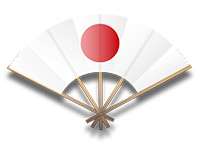What is it?
A calf stain can also be referred to as a ‘pulled calf’. A calf strain is where the calf muscles (gastronemus, soleus and plantaris) are forcefully stretched beyond their physical limit causing tears or micro tears within the muscle. The tears normally occur at the muscular tendinous junction, roughly half way between the knee and heel.
What is the cause of it?
This injury normally occurs when the individual is accelerating and/or changing direction. It can also occur when the muscle goes into spasm or if the muscle contracts forcefully. Calf strains can also be caused by wearing inappropriate foot wear. This injury is very common in Kendoka’s left calf.
How does it feel?
Pain may be felt on the back of the calf possible during and after activity depending on the severity of the strain. Bruising may also be present due to internal haemorrhaging (tear). There will also be some swelling within the calf. Pain is usually sharp in the muscle and depending on the severity you may limp. If you have torn the muscle there will be very sharp pain when you contract the muscle
What should you do if you injure it?
RICE (Rest, Ice, Compression and Elevation) treatment. Rest requires you to stop kendo, and limiting the amount of weight you put through your leg. Ice should be applied at the site of injury for 15–20 minutes every few hours. This will help limit the amount of haemorrhaging and swelling. Compression involves the application of a firm elastic bandage around your ankle. It should be firm but not to cause pain. Elevation involves lying with your ankle resting comfortably on a chair or pillows so that it is above the level of your heart.
Stretching the calf musculature should also be carried out after the acute pain has subsided approximately 3rd day onwards (but please get advice before this as you may have a tear in the calf in which case the stretching should not be done). This is done by pulling the toes towards the knee, with the knee straight.
You should continue the RICE regime until you consult your Osteopath/Physiotherapist, preferably the sooner the better. They will then treat you so you make a fuller recovery sooner and give advice on how badly you are injured and how long to stay off kendo.
What shouldn’t you do?
You should avoid activities which further aggravates the pain. You should also avoid using hot packs.
Could there be any long term effects?
If left untreated this could lead to a complete tear of the calf muscle, scar tissue may also form. Scar tissue can be very difficult to remove and also painful to have treated. There could also be relapses in calf strains meaning you stay off Kendo for longer. General performance of the calf musculature will also be reduced limiting your ability to push off in kendo.
Sometimes a calf strain may develop into a calf tear if left untreated. You may hear an audible pop followed by very sharp pain in the affected calf.
What can you do to avoid it?
Many kendoka do not stretch prior to training. Like any physical exercise, stretching is paramount to allow the muscle to warm and prepare itself to contract forcefully. This also gets rid of any tightness that may have developed in your day to day activity such as wearing high heels, or wearing wrong footwear for different types of activity (running for bus in leather soled shoes). Stretching also allows neurological stretching to occur so your nerves are firing optimally and are ready for the stresses put on it.

- Assume position shown, with one foot behind the other
- Point toes directly forward, and hold the heels down
- Lean forward onto your knee so that you feel a stretch in the back leg
- Hold for 30 seconds
- Repeat 5 times for each leg
Article by: Narendra Arjan BSc (Hons) Ost Med, DO, ND, PGDip Animal Osteopathy
(BKA Kendo Squad Osteopath)
